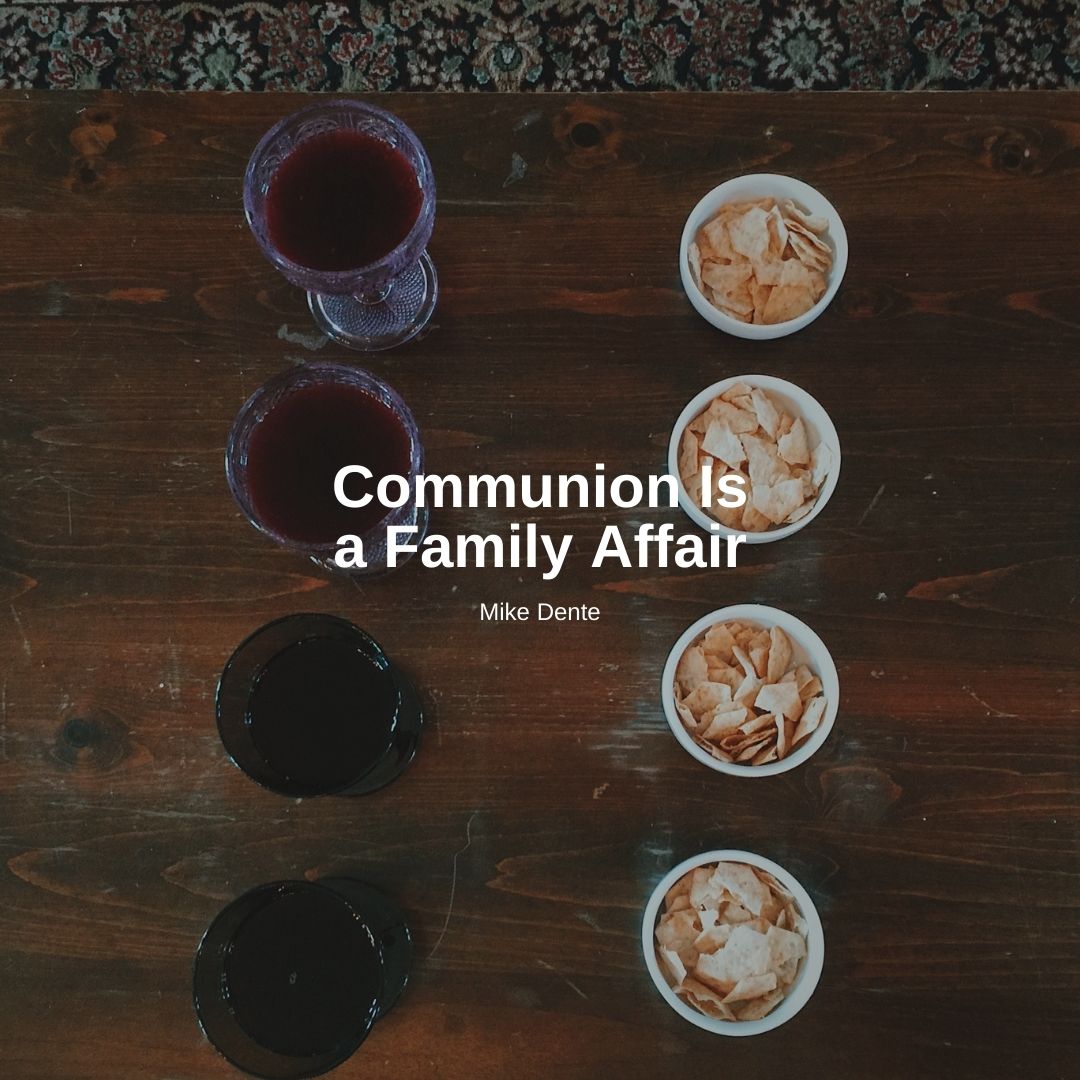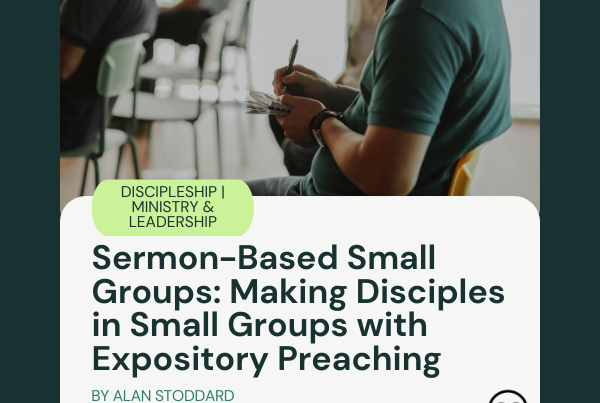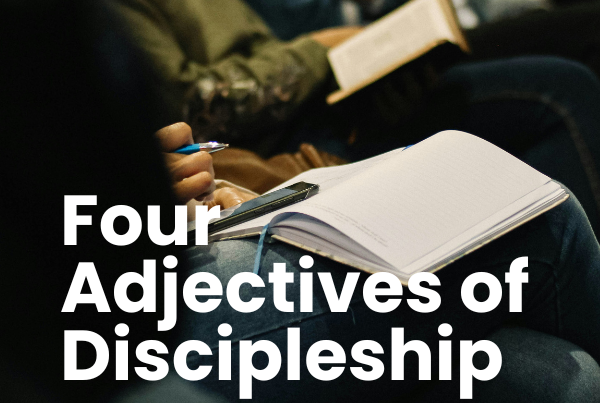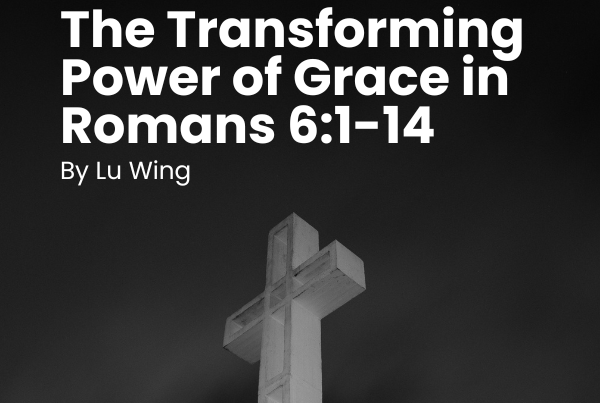
Do you remember the first time you took communion? I remember pretending to close my eyes and secretly watching everyone around me. I had no idea what to do, but I didn’t want anyone else to know!
One of the best stories I’ve heard comes from Ruth Rosen about Moishe, her father and founder of Jews for Jesus. As a new believer, he was excited to hear the church would celebrate the Lord’s Supper the following Sunday. To him, this meant the Passover Seder, a family celebration with a copious meal. When the day came, he got the whole family dressed up and skipped breakfast for what he expected to be a community feast with his new church family. When the communion wafers and juice cups were passed, he didn’t notice. It wasn’t until the end of the service, thinking he’d missed everything, that he discovered they’d already celebrated the Lord’s Supper.1 This was far from the Passover meals the Rosen family grew up on.
Covenant and Family, Belonging and Celebrating
The crossed cultural cues and Rosen’s humor are familiar to anyone who knows the awkwardness. Communion is often presented as a sweetly solemn time remembering the Lord. It’s the space where Jesus fills the void of our sinfulness and draws us to Himself in His love.2 Yet, the spirit of the family that stirred up Rosen’s expectations should also be present.
Another way of looking at it is the idea of covenant. Covenant and family, belonging and celebrating. With this in mind, I want to trace the covenantal lines that bring us to our communion service, hoping that as we take the bread and cup, we might enjoy it more deeply.
What Is a Covenant and Why Is It “Cut”?
An excellent place to begin our quest is Genesis 15:7-21, when the Lord tells Abraham about the Exodus from Egypt. He’s just been accounted righteous, and the Lord affirms His promise to give his descendants the promised land. But when he asks for a sign, the Lord asks him to perform a curious sacrifice. He prepares the animals and cuts them open but doesn’t light them. Waiting for the Lord’s instructions, he was left to fight off the vultures until he eventually fell asleep. The Lord appears to him in a dream and explains that his descendants will become slaves to a foreign nation, but YHWH will deliver them. Suddenly, a fire passes between the prepared sacrifice as the Lord cuts a covenant with Abraham.
Before we move forward, it may be good to ask what a covenant is and why it’s “cut.” This is an important question because the sense of covenant is nothing like what we know today, not even among Christians. This isn’t because our culture is more perverse than the Canaanites’ around 1900 years before Christ. Archeology has discovered standard practices that today are thankfully not just punishable by law but would bring moral outrage to most people.
The word covenant in English comes from the Hebrew word “בְּרִית” (bᵉrît), which essentially means an obligation.3When we speak about the great covenants of the Bible, like the one we’re discussing with Abraham, we should notice that it’s “cut” with a sacrifice; God initiates it, the only one capable of keeping it. Next, it’s relational, even though the two parties aren’t equals. Lastly, its result is a perfect blessing.
The closest examples to a covenant we have today are lacking in one of these ways. If we speak of contract, it’s not necessarily relational. Marriage comes close, but it doesn’t require an animal sacrifice. So, like Moishe Rosen for the first time at the Trinity Baptist communion table, I’m afraid most of us today would be pretty lost in the ancient culture of covenants.
The Feast as a Sign between Israel and God, a Family Event
Let’s look then to the moment prophesied by the Lord. In Exodus 12, we notice more covenantal language as the people finally gear up for the caravan out of Egypt. In 12:14-17, the feast details are laid out as an ordinance for the people. It becomes a sign between Israel and the Lord, celebrating what He’s done. A few verses later, in 12:21-24, we’re given instructions for the evening. They needed to have the blood of a lamb sprinkled on the door to be protected from the horrifying plague about to come to the Egyptians.
This leads us to another set of instructions in 12:40-43, where Moses reminds the reader that the Lord of eternity, who always keeps His promises, led the people out of Egypt on the day it was foretold to Abraham. This feast, therefore, was to be a family event (remember Moishe Rosen), and it was to be a celebration of the greatness of Israel’s covenant-keeping God, YHWH. Notice how the covenant is directly referred to in verse 43 as the prohibition goes out to all those who aren’t circumcised or not part of the covenant. Let’s bring this back to our prior observations. God initiates the feast, a sacrifice is cut, a relationship with God is affirmed, and the result is a true blessing.
Before we get to the Last Supper, we need to make one more stop. In Exodus 24:7-8, we’re now with the people in the desert. They’ve been delivered from their enemies and are camped around the mountain while the Lord gives the law to Moses. The scene with the golden calf has yet to transpire, and the people are still in awe of the wondrous sight of God, the all-consuming fire that lights up the mountain and sky. Moses then builds an altar, sacrifices an offering of peace for the twelve tribes, and sprinkles the people with blood this time.
Moses ties together all that goes before as he shows them the Book of Covenant that he has already read. He says this is the blood of the covenant, and this ends with a feast in the presence of God with Moses, Aaron, and the seventy elders. Before we move on, notice the reoccurring pattern: the Lord’s initiation, sacrifice, relationship, and blessing.
Passover, and Keeping It with Jesus
Finally, we get to the best part concerning the Passover and the keeping of it with Jesus. We can now feel the excitement of a family gathering as Jesus sends His disciples to prepare everything in Matthew 26:17-19. The Lord sits as the head of the family in verses 26-29. We read of the ceremony as if taken from a Haggadah reading from the Seder meal.4 Jesus, greater than Moses, goes further than a family patriarch and fulfills all of what Moses was given—this time attributing the blood of the covenant to Himself.
This wasn’t the first time the disciples were confronted with this kind of language. In John 1:36, John the Baptist cries out that Jesus is the Lamb of God, and later, during the Passover season, we read of how Jesus attributes the manna and His blood to a proper fellowship with Him that sinks deeper into a soul than mere eating or drinking (John 6:4, 51). Paul’s covenantal reference in 1 Corinthians 11:23 sums up the entire scene. Taking communion is a covenantal celebration initiated by Jesus, who sacrificed Himself, bringing in everlasting relationship and eternal blessing.
Knowing the Story of the Covenant Impacts How We Take Communion
If it hasn’t already been asked, the question will arise if you’re like me: this is an exciting storyline, but why does it matter? How we take communion is essential; the last part of 1 Corinthians 11 tells us that. But even if we only see the ceremony as purely symbolic, knowing the covenantal aspect should affect how we take communion. For example, knowing this history will allow us to see ourselves as part of something greater. Taking communion is more than just a self-test of how I did this week or a grinding self-examination.
Though we should confess sin, and examine our hearts, if we don’t consider the bigger picture of our more excellent family and victory in Jesus, we become a party of one in a massive feasting hall. We’re like couples who go to Michelin restaurants and spend their time looking at their cell phones rather than into each other’s eyes. Something is lost.
We should look into the eyes of Jesus, who sits at the head of the table, and celebrate as a family.
Remembering the story of the covenant should give us confidence to know what we’ve entered into. Our place is secure in His love, as are my brother and sister’s next to me. We’re part of His assembly; we belong to Him. Perhaps this is the sweetest reason, a reason that should inspire us—with love and amazement for the One who gave His body as our life-giving bread and spilled His blood—and usher us into the communion of the eternal New Covenant.
References
1 Ruth Rosen, Called to Controversy: The Unlikely Story of Moishe Rosen and the Founding of Jews for Jesus(Nashville: Thomas Nelson Publishing, 2012), 70-71.
2 Esther Lightcap Meek, Loving to Know: Covenant Epistemology (Eugene, OR: Cascade Books, 2011), Kindle Edition, 272-297.
3 Ernst Jenni, ed., with assistance from Claus Westermann, Theological Lexicon of the Old Testament (Peabody, MA: Hendrickson Publishers, 1997).
4 https://www.chabad.org/holidays/passover/pesach_cdo/aid/661624/jewish/English-Haggadah-Text.htm.










